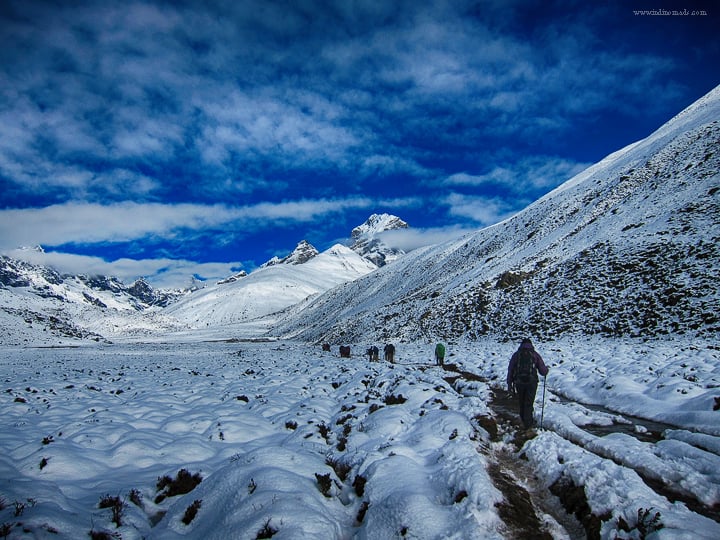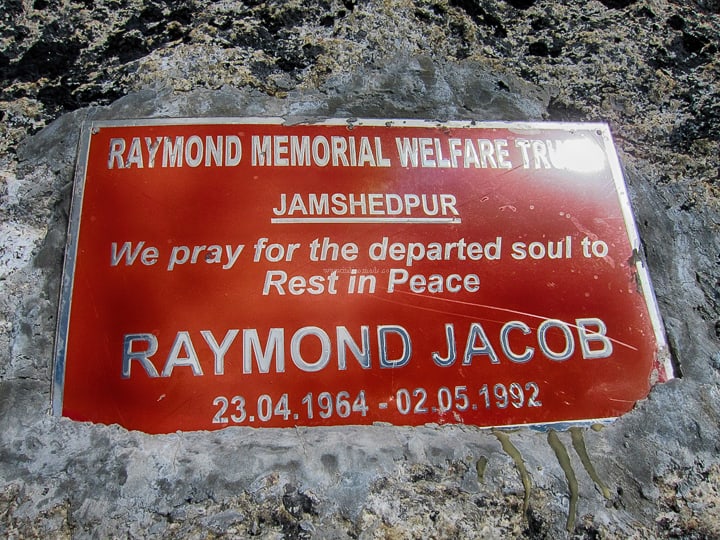After having spent nearly a couple of months at higher altitude, we collectively seem to have experienced pretty much every symptom of altitude sickness, only the mild versions thankfully.
Here is a summary of the lessons learned:
1) Drink water forcefully:
Dehydration is the major cause of headache at higher altitude. People tend to think of themselves as camels and take little water with them to avoid heavy backpack. If necessary trim down on your wardrobe and carry more water. And force yourself to drink even if you are not thirsty or it’s cold outside or you have to stop for loo multiple times.
Before packing for hike find out the water source information. For example in Annapurna circuit, there is plenty of water available throughout the trail except for Tilicho Lake. So, it is ok to carry 2 litres at a time and replenish. However, in Kilimanjaro for example, you have to carry whole day’s worth of water with you.
So, even if you are like me who wants to wing everything, PLAN this one !!!
2) Take baby steps:
Walk slower than your usual pace. It is important not to exhaust yourself in the process. Most of the times you are on the trail because the scenery is beautiful. Why not enjoy it rather than rushing. From time to time there will be people who run through the trail. May be their body is trained and programmed that way. But, going faster isn’t going to help most of us.
As is heart and lungs are working at a high gear at altitude, walking faster only puts more pressure and leads to crash.
3) Breath with nose:
Breathing with nose will force you to walk slower than breathing with both nose and mouth. This way, heart rate will be under control and you will end up walking slower to match with the heart rate as well.
I found it the most difficult to keep my mouth closed. Duh !!!
4) Rest up:
As a general rule, take a rest day off after every 3-days of hiking or 1000m altitude gain. This is important to let the body acclimatize.
Also, while walking, take regular breaks. Yes, you are already walking at a slower pace, but why not stop for a picture or two.
There could be the other extreme attitude of stopping too much for pictures too. So, watch out and pace yourself especially if you have to reach the campsite by certain time.
5) Eat , Eat and Eat:
Loss of appetite is as common as headache at higher altitude. It is easy to think that you don’t need food because you are not hungry. But, in reality you need to eat more as the body machine is working harder to cope with cold, lack of oxygen and strenuous workout.
6) Use moderation with medication:
Slight headache, nausea or diarrhea are common for almost everyone. These can be just a nuisance to get going for the day. So, as long as the symptoms are mild, it is ok to take basic medication.
However, don’t suppress the symptoms by consuming too much medication that can lead to not recognizing bigger issues.
Altitude can KILL.
Recognize the symptoms yet don’t be a hypochondriac. Give enough importance to the symptoms and don’t have over confidence. It is a walk on the rope.
7) Recognize the mental fatigue:
Long days on the trail at higher altitude such as 5000m can be exhausting not only physically, but mentally. Recognize it. Force yourself a rest day or something fun to do.
I have had a day when I just broke down on the trail because I was just mentally fatigued due to long hauls. I clearly didn’t give that aspect any importance until the day of failure. So, listen to yourself.
8) Talk and express yourself:
I highly recommend not going alone on the trails for safety and boredom reasons. Talk to your partner about what your body is telling you. Just let them know if your knee is hurting or shins are cramping up or whatever it might be.
Trails are a great place to complain about what is hurting and it is not considered complaining here ![]() So, go on and talk. It is important that your travel partner knows what is going on. This way, they can find appropriate help if needed.
So, go on and talk. It is important that your travel partner knows what is going on. This way, they can find appropriate help if needed.
9) Don’t give-in to peer pressure:
Trails like Annapurna circuit are very crowded during high season. There will be plenty of people who are younger, your age-group and older than kicking your behind and walking up the mountain much faster than you.
100s of people might pass by you throughout the day. Strike a conversation with them, get to know them, exchange information with them, but don’t change your pace for them. Yes, it is not a place to give-in to peer pressure at higher altitude.
After all, it is your hiking experience, not someone else’s. So, walk at your pace and enjoy at your convenience.
10) Walk high but stay low:
There might be days like my Thorang Pass day, where you might be forced to make a tough decision. I couldn’t take another step forward. My head was spinning. So, I chose to stop walking and take the horse to the highest point.
The mistake made here was that the day I reached Thorang high camp, I was already fatigued. So, we decided to take a rest day at high camp. Instead of staying back at high camp, we should have walked down and stayed at the low camp. This would have helped me acclimatize better on the pass day.
Staying back at high camp only puts the body through more stress.
So, follow this advice strictly. Walk to a higher altitude, but stay at a lower altitude. This would save you a lot !!!
Note on Diamox: We chose not to take it. But, we met many trekkers who took it. Use your own judgement and medical advice before deciding.
HAPE / HACE : Severe cases of altitude sickness can lead to HAPE or HACE. For more information, check CDC website here.










